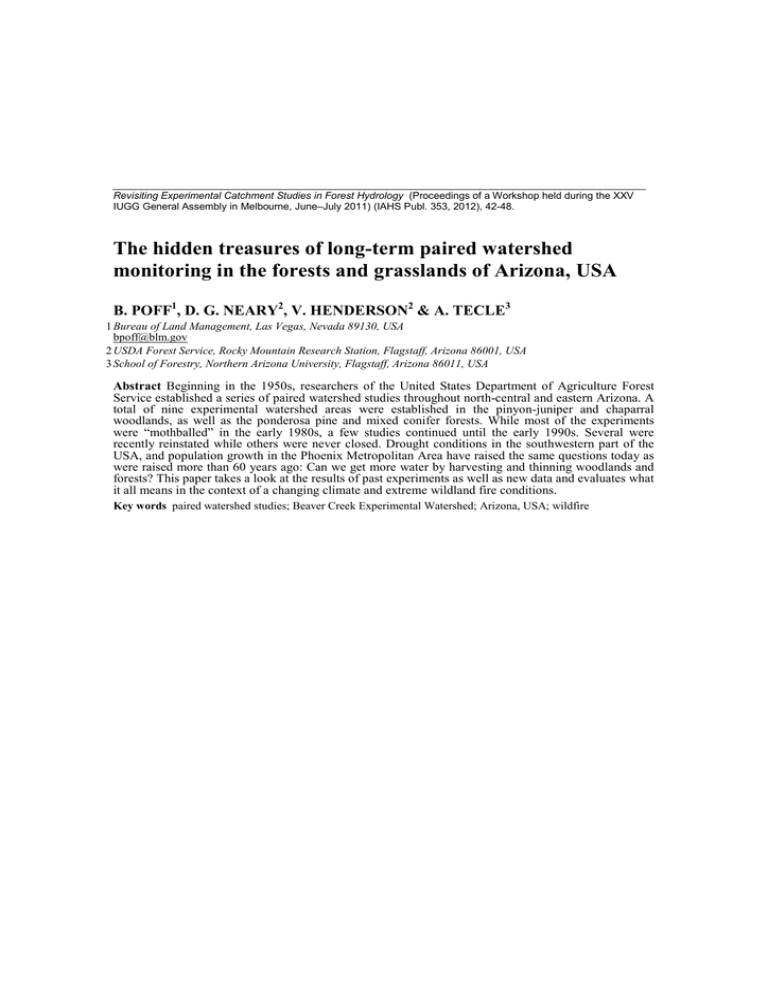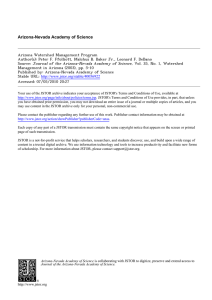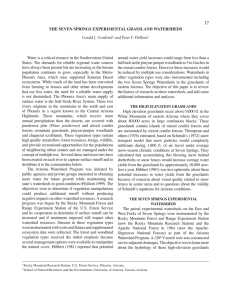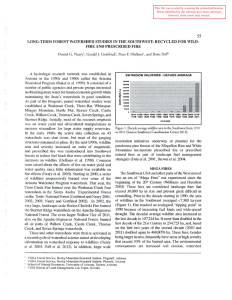Document 11958727
advertisement

_____________________________________________________________________________________________ Revisiting Experimental Catchment Studies in Forest Hydrology (Proceedings of a Workshop held during the XXV IUGG General Assembly in Melbourne, June–July 2011) (IAHS Publ. 353, 2012), 42-48. The hidden treasures of long-term paired watershed monitoring in the forests and grasslands of Arizona, USA B. POFF1, D. G. NEARY2, V. HENDERSON2 & A. TECLE3 1 Bureau of Land Management, Las Vegas, Nevada 89130, USA bpoff@blm.gov 2 USDA Forest Service, Rocky Mountain Research Station, Flagstaff, Arizona 86001, USA 3 School of Forestry, Northern Arizona University, Flagstaff, Arizona 86011, USA Abstract Beginning in the 1950s, researchers of the United States Department of Agriculture Forest Service established a series of paired watershed studies throughout north-central and eastern Arizona. A total of nine experimental watershed areas were established in the pinyon-juniper and chaparral woodlands, as well as the ponderosa pine and mixed conifer forests. While most of the experiments were “mothballed” in the early 1980s, a few studies continued until the early 1990s. Several were recently reinstated while others were never closed. Drought conditions in the southwestern part of the USA, and population growth in the Phoenix Metropolitan Area have raised the same questions today as were raised more than 60 years ago: Can we get more water by harvesting and thinning woodlands and forests? This paper takes a look at the results of past experiments as well as new data and evaluates what it all means in the context of a changing climate and extreme wildland fire conditions. Key words paired watershed studies; Beaver Creek Experimental Watershed; Arizona, USA; wildfire










